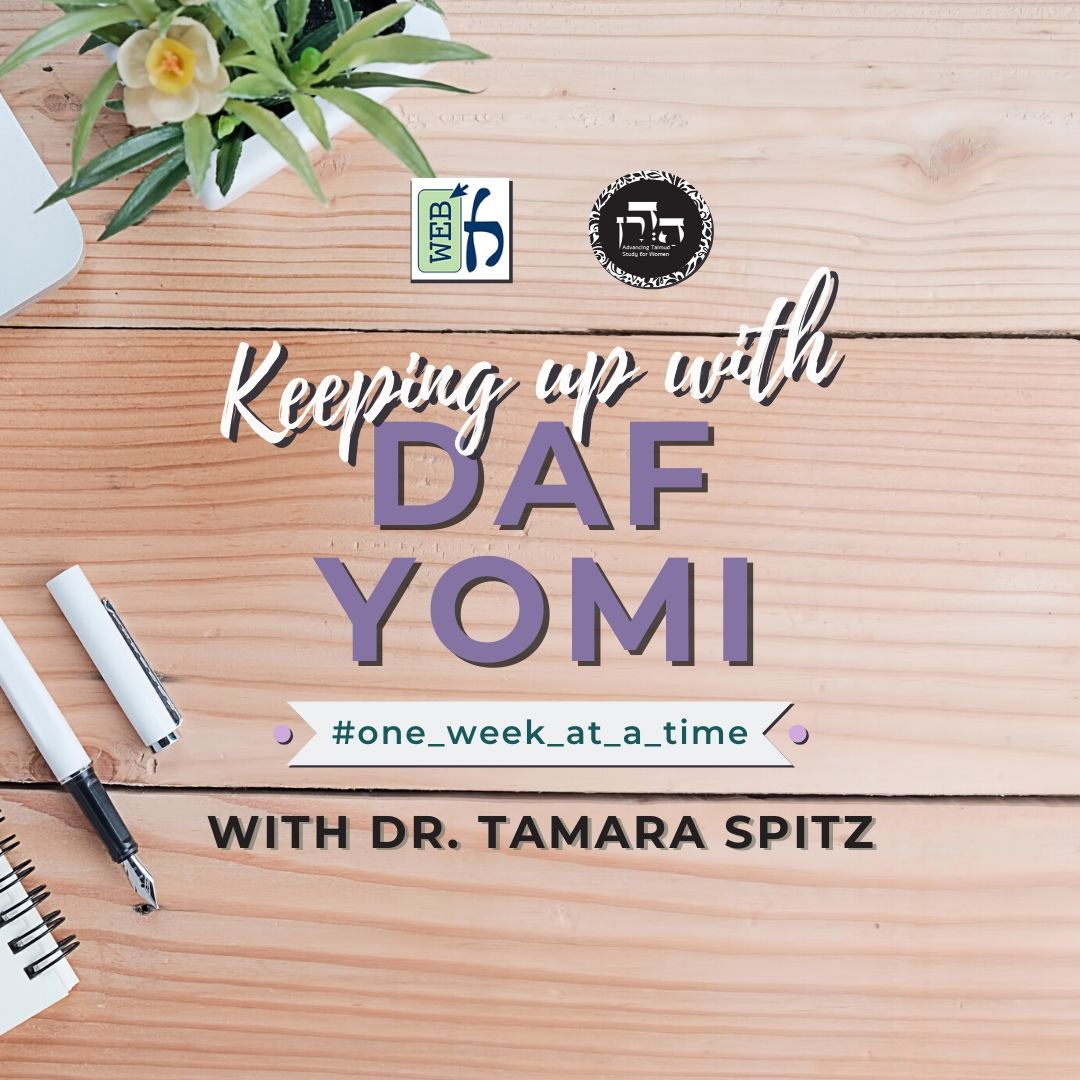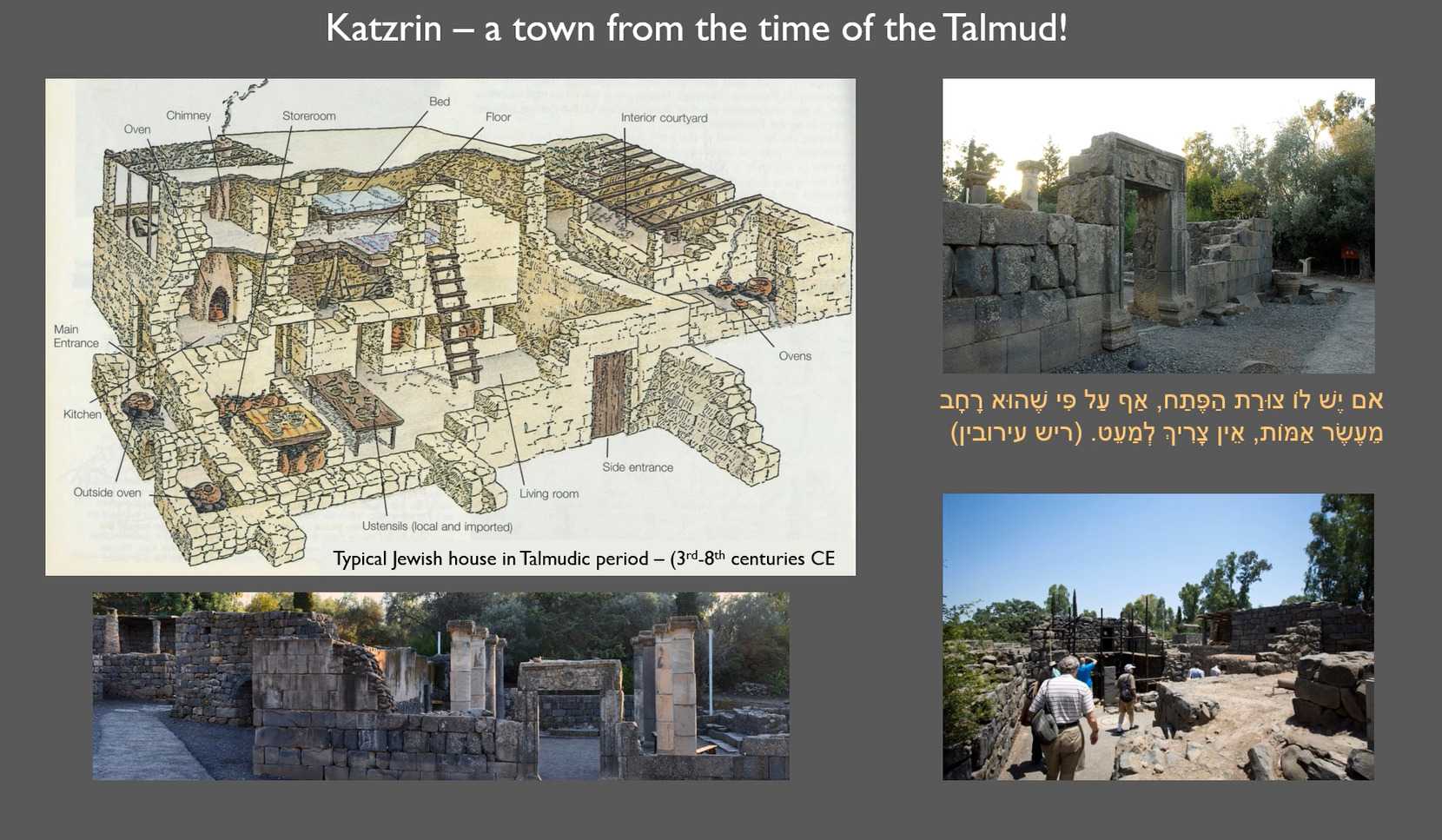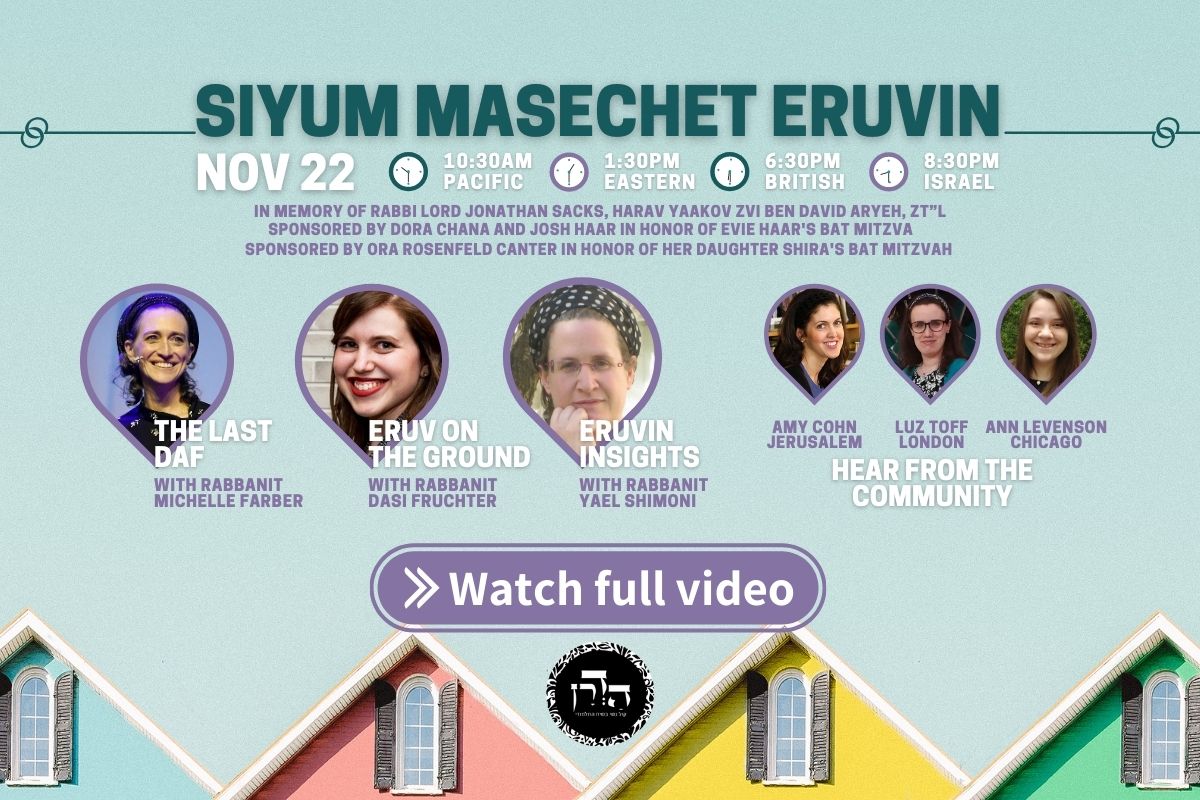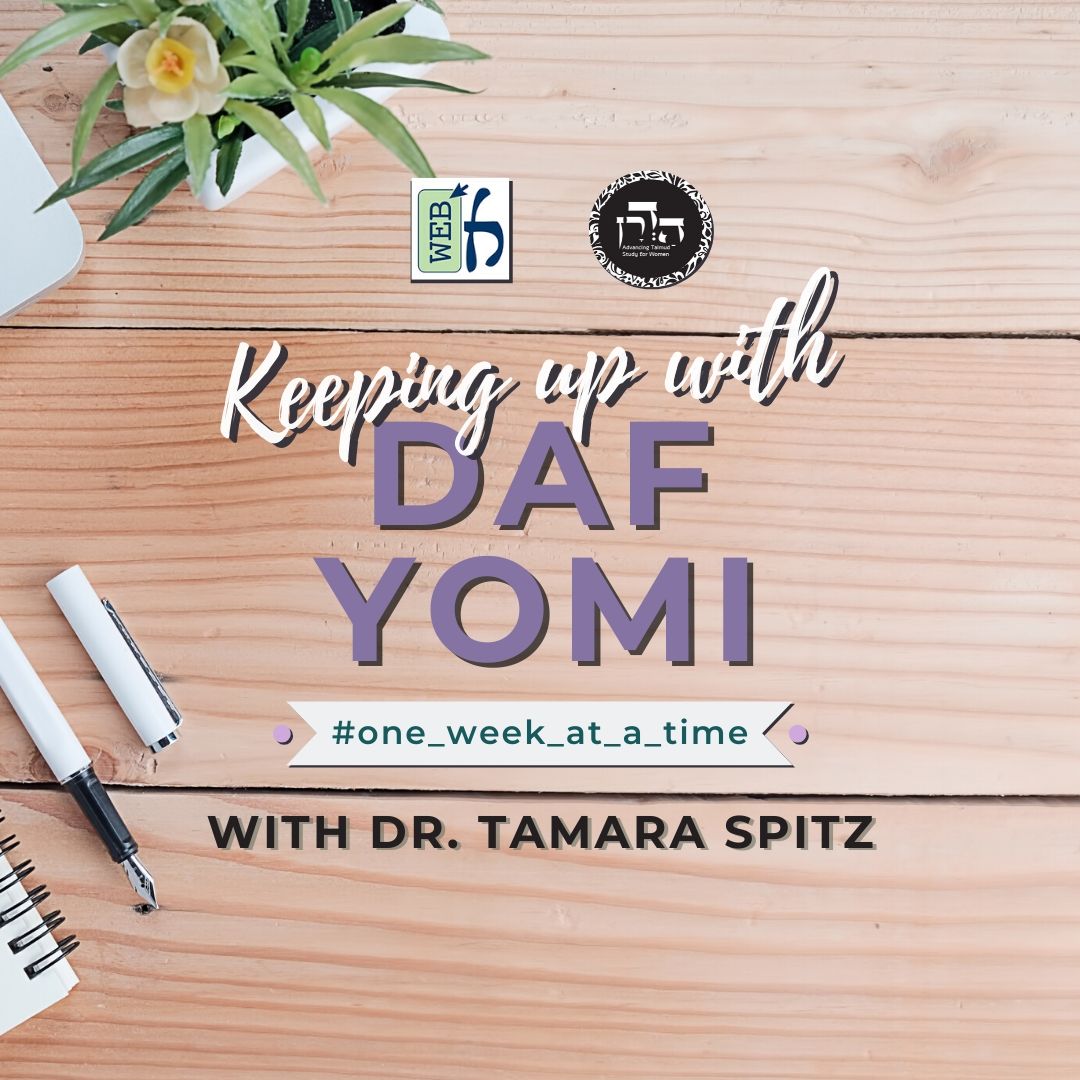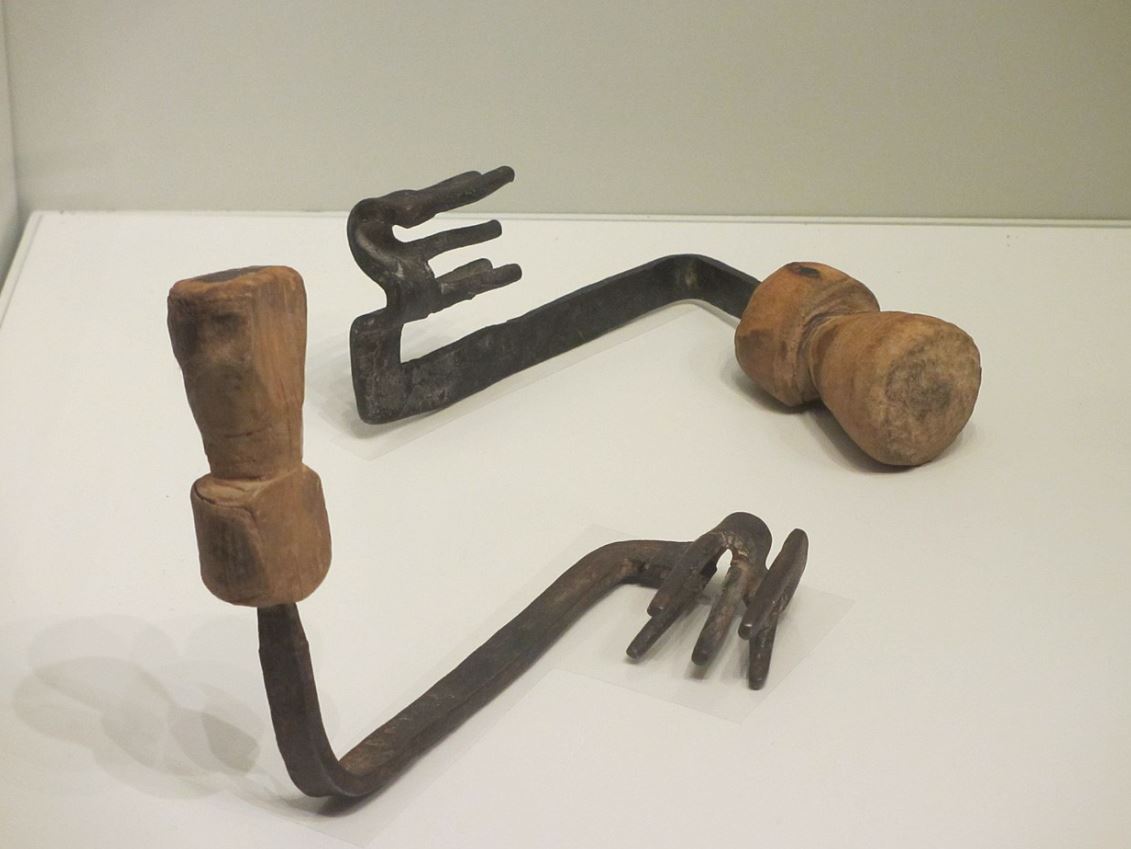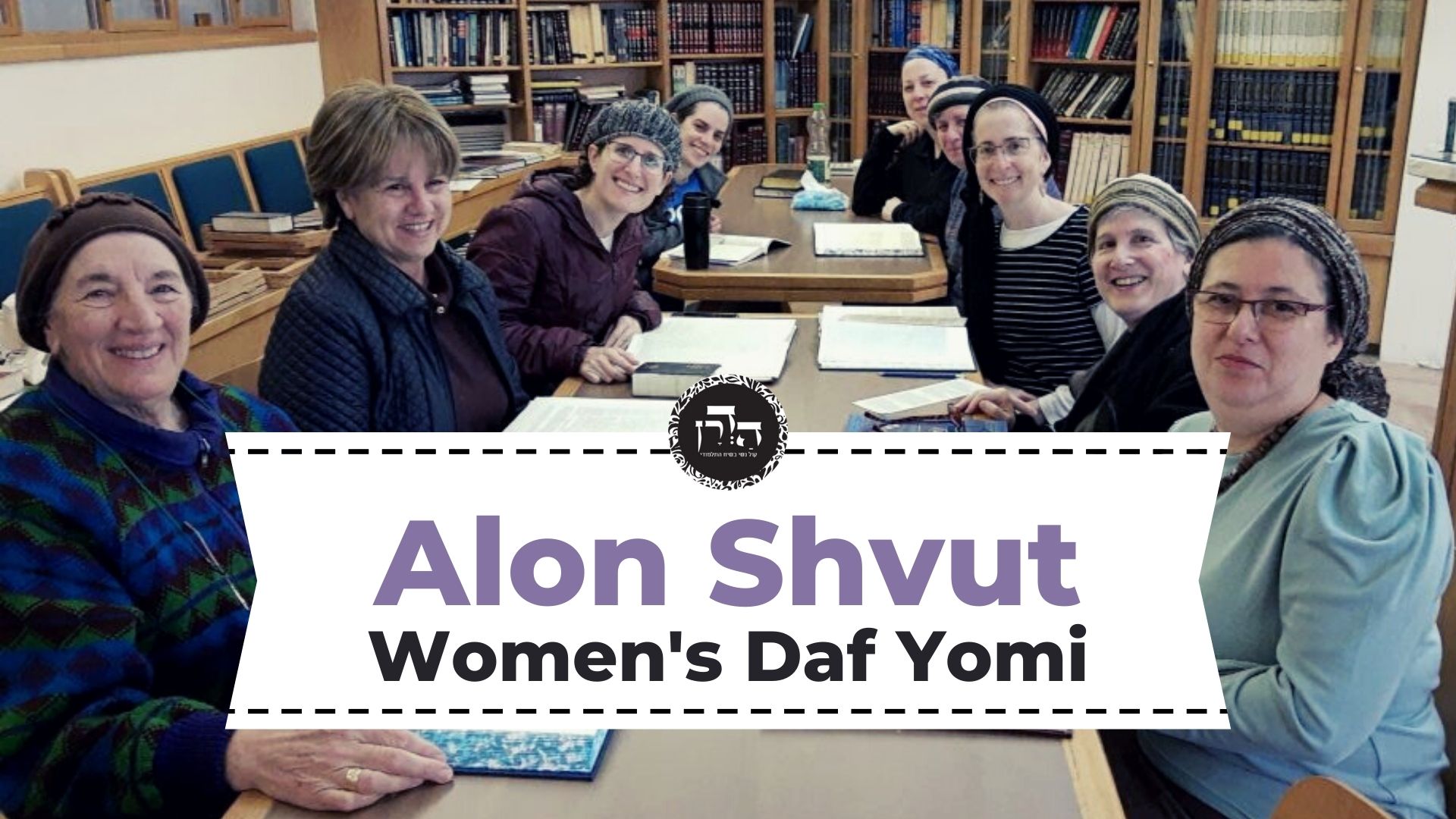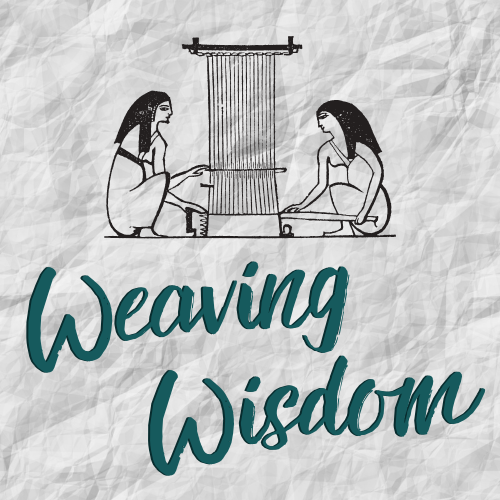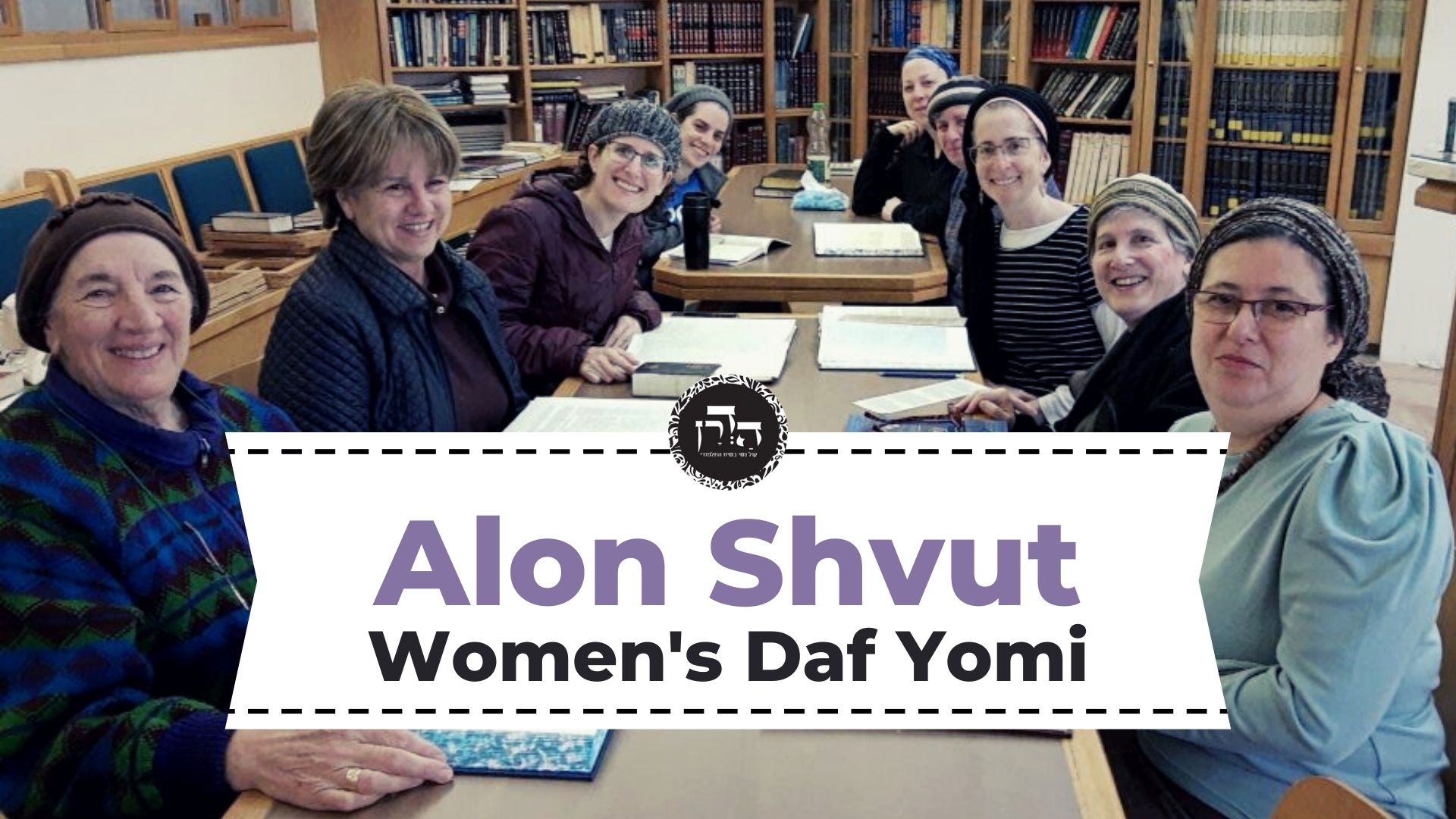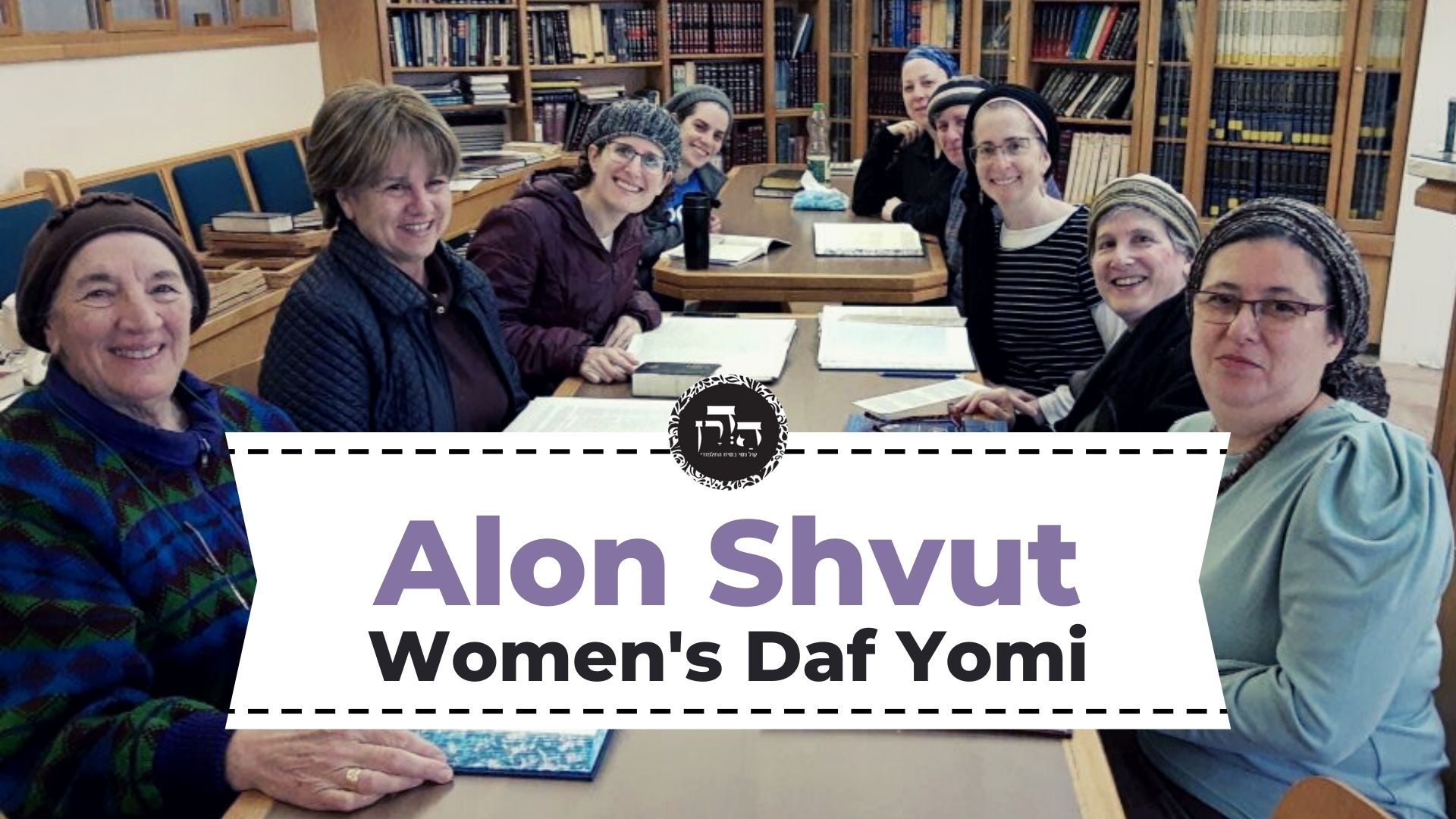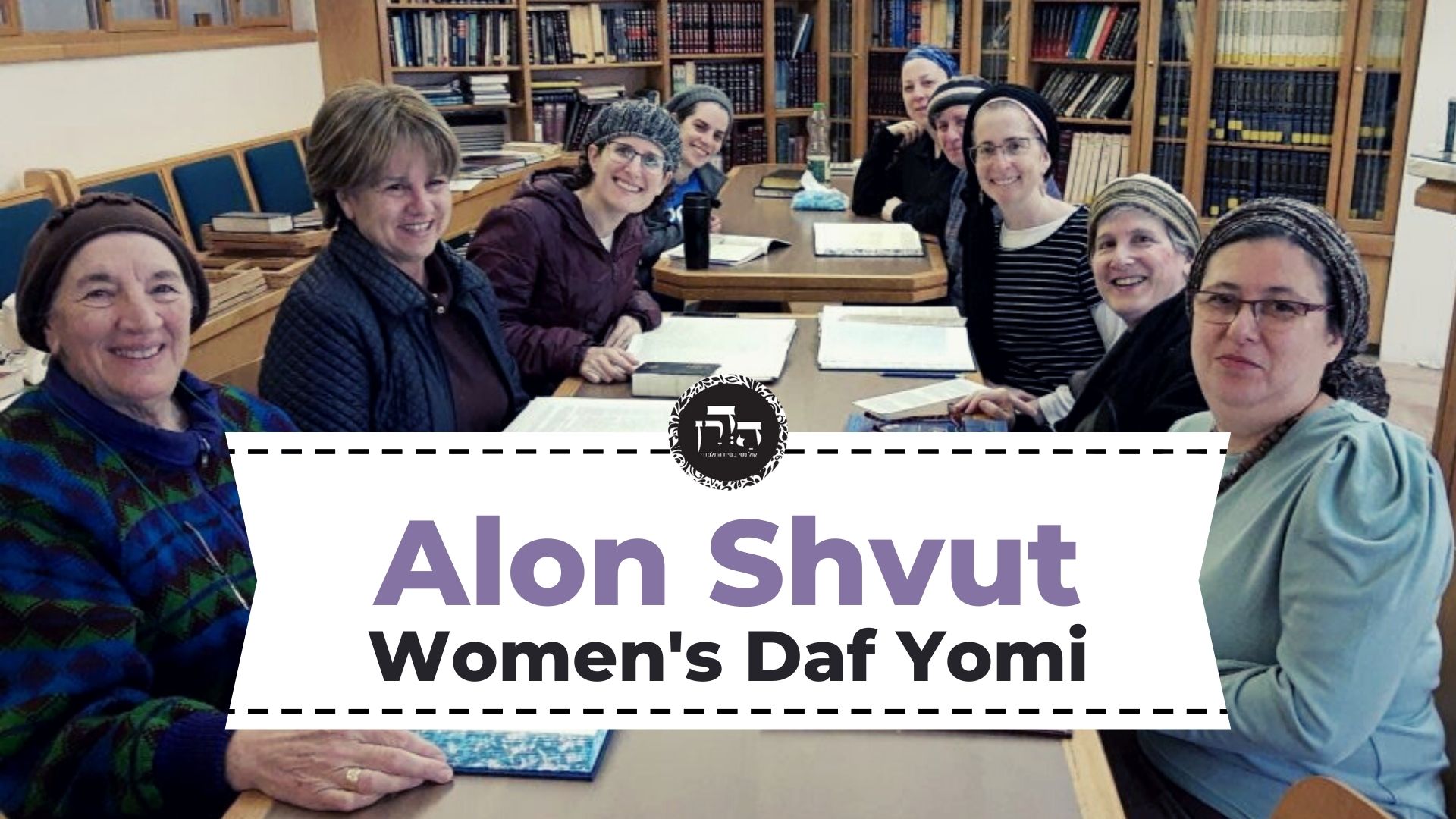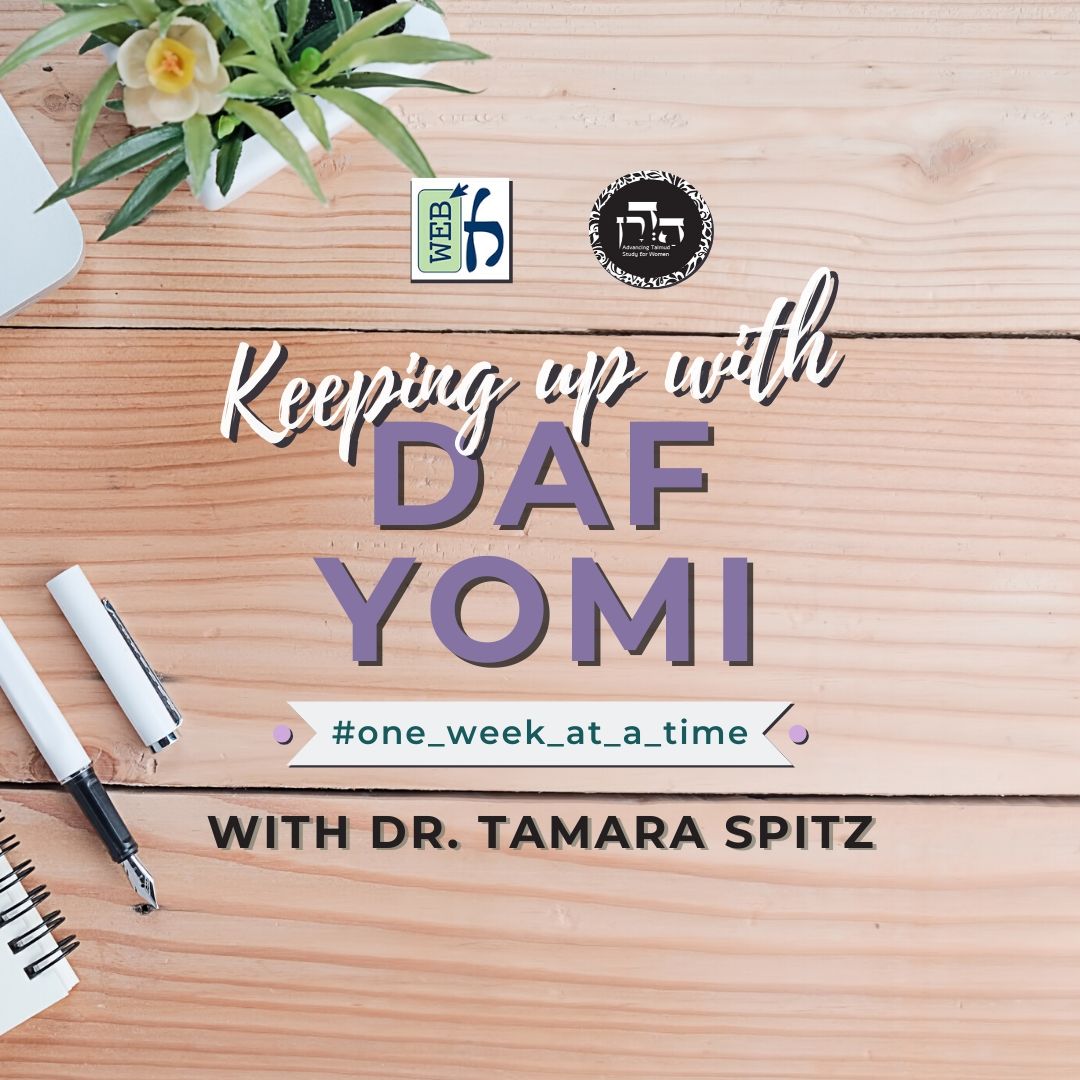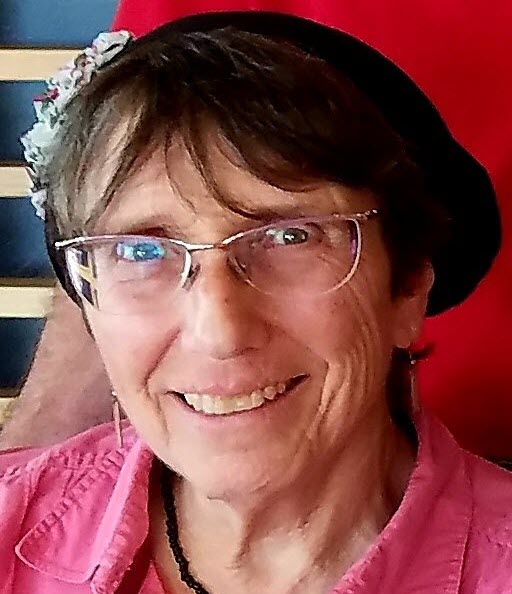Do Rava and Abaye disagree about whether or not we can use imaginary walls created by a ceiling, pi tikra yored v’sotem (when there are no actual walls on any side), as Rav and Shmuel disagree? Does Rabbi Yosi in the mishna who disagrees with Rabbi Yehuda (that the beginning of Shabbat is the determining factor) permit in these cases or forbid? Do we hold like Rabbi Yehuda or Rabbi Yosi? Shmuel holds like Rabbi Yehuda, however the gemara questions that based on a different source. The mishna discusses cases of a bridge or a second floor built over the public domain – can one carry beneath it? On what basis would it be permitted? Can one fix (make an eruv) an alley that is open on two sides? On what basis could one permit? The tenth chapter begins with a discussion of tefillin found in a field. One is obligated to “save” them. How can one carry them on Shabbat – only if they wear them? Tana Kama and Rabban Gamliel disagree about whether one wears one pair or two at a time . What is the root of their debate? Does it connect with other basic debates such as, is one supposed to wear tefillin on Shabbat, do mitzvot need intent in order to fulfill them, is it forbidden due to bal tosif, adding to mitzvot, to wear two pairs at a time?
Eruvin 95
Share this shiur:
Want to dedicate learning? Get started here:
Today’s daily daf tools:
Delve Deeper
Broaden your understanding of the topics on this daf with classes and podcasts from top women Talmud scholars.
New to Talmud?
Check out our resources designed to help you navigate a page of Talmud – and study at the pace, level and style that fits you.
The Hadran Women’s Tapestry
Meet the diverse women learning Gemara at Hadran and hear their stories.
Eruvin 95
קוֹרָה אַרְבָּעָה מַתִּיר בְּחוּרְבָּה, וְרַב נַחְמָן אָמַר רַבָּה בַּר אֲבוּהּ: קוֹרָה אַרְבָּעָה מַתִּיר בְּמַיִם, מַנִּי?
A cross beam four handbreadths wide renders carrying in a ruin that is breached into a public domain permitted, as the edge of the cross beam is considered to descend and seal the breach. And that which Rav Naḥman said that Rabba bar Avuh said: A cross beam four handbreadths wide renders carrying in water permitted like a partition. In accordance with whose opinion were these rulings stated?
לְהַךְ לִישָּׁנָא דְּאָמְרַתְּ בְּעֶשֶׂר לָא פְּלִיגִי: בְּעֶשֶׂר, וְדִבְרֵי הַכֹּל. לְהַךְ לִישָּׁנָא דְּאָמְרַתְּ בְּעֶשֶׂר פְּלִיגִי: כְּרַב.
The Gemara explains: According to this version that you stated, that Rav and Shmuel agree with regard to an opening no wider than ten cubits, here it is referring to a cross beam that is no longer than ten cubits, and everyone, both Rav and Shmuel, agrees with these rulings. According to that other version that you stated, that they disagree with regard to an opening no wider than ten cubits, these rulings are in accordance with the opinion of Rav alone.
לֵימָא אַבָּיֵי וְרָבָא בִּפְלוּגְתָּא דְּרַב וּשְׁמוּאֵל קָמִיפַּלְגִי, דְּאִיתְּמַר: סִיכֵּךְ עַל גַּבֵּי אַכְסַדְרָה שֶׁיֵּשׁ לָהּ פַּצִּימִין — כְּשֵׁירָה, אֵין לָהּ פַּצִּימִין, אַבָּיֵי אָמַר: כְּשֵׁירָה, וְרָבָא אָמַר: פְּסוּלָה.
The Gemara suggests: Let us say that Abaye and Rava are disagreeing with regard to the point that was the subject of a dispute between Rav and Shmuel. As it was stated: If one placed roofing on top of a portico that has doorposts, i.e., pillars that form the beginnings of partitions, it is a valid sukka. If, however, he placed the roofing atop a portico that has no doorposts, there is a dispute. Abaye said: It is a valid sukka. And Rava said: It is invalid.
אַבָּיֵי אָמַר כְּשֵׁירָה, אָמַר פִּי תִקְרָה יוֹרֵד וְסוֹתֵם. וְרָבָא אָמַר פְּסוּלָה, לָא אָמַר פִּי תִקְרָה יוֹרֵד וְסוֹתֵם. לֵימָא אַבָּיֵי כְּרַב, וְרָבָא כִּשְׁמוּאֵל?
The Gemara elaborates: Abaye said: It is valid. As he said: The edge of a roof descends and seals. Since the portico is roofed, it is considered to have partitions as well. And Rava said: It is invalid, as he did not say: The edge of a roof descends and seals. Let us say that Abaye holds in accordance with the opinion of Rav, and Rava holds in accordance with the opinion of Shmuel?
אַלִּיבָּא דִשְׁמוּאֵל כּוּלֵּי עָלְמָא לָא פְלִיגִי. כִּי פְּלִיגִי אַלִּיבָּא דְרַב: אַבָּיֵי כְּרַב. וְרָבָא — עַד כָּאן לָא קָאָמַר רַב הָתָם, אֶלָּא דְּהָנֵי מְחִיצוֹת לְאַכְסַדְרָה עֲבִידִי. אֲבָל הָכָא, דְּהָנֵי מְחִיצוֹת לָאו לְסוּכָּה עֲבִידִי — לָא.
The Gemara answers: According to the opinion of Shmuel, everyone, including Abaye, agrees that this sukka is invalid. Where they disagree is according to the opinion of Rav. Abaye holds in accordance with the opinion of Rav in a straightforward manner. And Rava claims: Rav stated his opinion, that the edge of the portico descends and seals, only there, where those partitions formed by the roof were built for the portico, and they are therefore viewed as sealing it. However, here, where these partitions were not built for the mitzva of sukka, no, even Rav would agree that the partitions are not sufficiently significant to utilize for the purpose of this mitzva.
רַבִּי יוֹסֵי אוֹמֵר: אִם מוּתָּרִין. אִיבַּעְיָא לְהוּ רַבִּי יוֹסֵי לֶאֱסוֹר, אוֹ לְהַתִּיר?
We learned in the mishna: Rabbi Yosei says: If they are permitted to carry there on that Shabbat, they are likewise permitted to do so in the future, and if they are prohibited from carrying there in the future, they are also prohibited from carrying there on that Shabbat A dilemma was raised before the Sages: Did Rabbi Yosei intend to prohibit carrying even on that Shabbat, or to permit carrying even in the future?
אָמַר רַב שֵׁשֶׁת: לֶאֱסוֹר. וְכֵן אָמַר רַבִּי יוֹחָנָן: לֶאֱסוֹר. תַּנְיָא נָמֵי הָכִי, אָמַר רַבִּי יוֹסֵי: כְּשֵׁם שֶׁאֲסוּרִין לֶעָתִיד לָבֹא, כָּךְ אֲסוּרִין לְאוֹתוֹ שַׁבָּת.
Rav Sheshet said: His intention was to prohibit carrying even on that Shabbat. And similarly, Rabbi Yoḥanan said: His intention was to prohibit carrying even on that Shabbat. This opinion was also taught in a baraita: Rabbi Yosei said: Just as they are prohibited from carrying in the future, so are they prohibited from carrying on that Shabbat.
אִיתְּמַר, רַב חִיָּיא בַּר יוֹסֵף אָמַר: הֲלָכָה כְּרַבִּי יוֹסֵי, וּשְׁמוּאֵל אָמַר: הֲלָכָה כְּרַבִּי יְהוּדָה.
It was stated: Rav Ḥiyya bar Yosef said that the halakha is in accordance with the opinion of Rabbi Yosei, while Shmuel said that the halakha is in accordance with the opinion of Rabbi Yehuda.
וּמִי אָמַר שְׁמוּאֵל הָכִי?! וְהָתְנַן, אָמַר רַבִּי יְהוּדָה: בַּמֶּה דְּבָרִים אֲמוּרִים, בְּעֵירוּבֵי תְחוּמִין. אֲבָל בְּעֵירוּבֵי חֲצֵירוֹת — מְעָרְבִין בֵּין לְדַעַת בֵּין שֶׁלֹּא לְדַעַת, לְפִי שֶׁזָּכִין לְאָדָם שֶׁלֹּא בְּפָנָיו, וְאֵין חָבִין שֶׁלֹּא בְּפָנָיו.
The Gemara expresses surprise: But did Shmuel really say this? Didn’t we learn in a mishna that Rabbi Yehuda said: In what case are these matters, that an eiruv may be established for a person only with his knowledge, stated? It is with regard to a joining of Shabbat boundaries, but with regard to a joining of courtyards, one may establish an eiruv for another person both with his knowledge and without his knowledge, because one may act in a person’s interest even when not in his presence, but one may act to his disadvantage only in his presence. One may take unilateral action on another’s behalf when it is to that other person’s benefit. However, if it is to that person’s disadvantage, or when the action entails both benefits and disadvantages, he may act on the other person’s behalf only if he was explicitly appointed as his agent. A joining of courtyards is always to a person’s benefit, and therefore it can be established even without his knowledge. However, with regard to a joining of Shabbat boundaries, any distance that a person gains in one direction he forfeits in the opposite direction. Consequently, this type of eiruv may be established only with his knowledge.
וְאָמַר רַב יְהוּדָה אָמַר שְׁמוּאֵל: הֲלָכָה כְּרַבִּי יְהוּדָה. וְלֹא עוֹד, אֶלָּא כׇּל מָקוֹם שֶׁשָּׁנָה רַבִּי יְהוּדָה בְּעֵירוּבִין — הֲלָכָה כְּמוֹתוֹ.
And Rav Yehuda said that Shmuel said: The halakha is in accordance with the opinion of Rabbi Yehuda. And furthermore, anyplace where Rabbi Yehuda taught with regard to the halakhot of eiruv, the halakha is in accordance with his opinion.
וַאֲמַר לֵיהּ רַב חָנָא בַּגְדָּתָאָה לְרַב יְהוּדָה: אָמַר שְׁמוּאֵל אֲפִילּוּ בְּמָבוֹי שֶׁנִּיטַּל קוֹרָתוֹ אוֹ לְחָיָיו? וַאֲמַר לֵיהּ: בְּעֵירוּבִין אָמַרְתִּי לְךָ, וְלֹא בִּמְחִיצוֹת.
And Rav Ḥana of Baghdad said to Rav Yehuda: Did Shmuel state this ruling even with regard to an alleyway whose cross beam or side post was removed during Shabbat? And Rav Yehuda said to him: I spoke to you with regard to the acquisition of an eiruv, and not with regard to partitions. The Gemara asks: How, then, could Shmuel rule that the halakha is in accordance with the opinion of Rabbi Yehuda in this case, after explicitly stating that the halakha is not in accordance with his opinion in the case of fallen partitions?
אָמַר רַב עָנָן: לְדִידִי מִיפָּרְשָׁא לִי מִינֵּיהּ דִּשְׁמוּאֵל: כָּאן שֶׁנִּפְרְצָה לְכַרְמְלִית, כָּאן שֶׁנִּפְרְצָה לִרְשׁוּת הָרַבִּים.
Rav Anan said: This matter was explained to me personally by Shmuel himself: Here, where Shmuel rules in accordance with the opinion of Rabbi Yehuda, it is in a case where the courtyard was breached into a karmelit. In that case the halakha is lenient, as there is no concern lest one transgress a Torah prohibition. There, where Shmuel states that the halakha is not in accordance with the opinion of Rabbi Yehuda, it is in a case where the courtyard was breached into a public domain, and the halakha is therefore stringent, due to the concern lest one transgress a Torah prohibition.
מַתְנִי׳ הַבּוֹנֶה עֲלִיָּיה עַל גַּבֵּי שְׁנֵי בָתִּים, וְכֵן גְּשָׁרִים הַמְפוּלָּשִׁים — מְטַלְטְלִין תַּחְתֵּיהֶן בַּשַּׁבָּת, דִּבְרֵי רַבִּי יְהוּדָה. וַחֲכָמִים אוֹסְרִין.
MISHNA: With regard to one who builds an upper story atop two houses on opposite sides of a public domain that passes beneath it, and likewise bridges with a thoroughfare beneath them that rest on walls on opposite sides of a public domain, one may carry beneath the upper story and beneath the bridge on Shabbat. This is the statement of Rabbi Yehuda, who maintains that these areas are considered private domains. And the Rabbis prohibit carrying in these areas.
וְעוֹד אָמַר רַבִּי יְהוּדָה: מְעָרְבִין לְמָבוֹי הַמְפוּלָּשׁ. וַחֲכָמִים אוֹסְרִין.
And furthermore, Rabbi Yehuda said: One may establish an eiruv even for an alleyway that is open at both ends, with no need for any additional measures, and the Rabbis prohibit doing so.
גְּמָ׳ אָמַר רַבָּה: לָא תֵּימָא הַיְינוּ טַעְמָא דְּרַבִּי יְהוּדָה מִשּׁוּם דְּקָא סָבַר שְׁתֵּי מְחִיצוֹת דְּאוֹרָיְיתָא. אֶלָּא מִשּׁוּם דְּקָסָבַר: פִּי תִקְרָה יוֹרֵד וְסוֹתֵם.
GEMARA: Rabba said: Do not say this is Rabbi Yehuda’s reason; that he maintains that by Torah law two partitions constitute a private domain, i.e., the areas beneath the upper story and the bridge are considered private domains, as each has two partitions, one on each side of the public domain. Rather, the reason for Rabbi Yehuda’s opinion is because he maintains that the edge of a roof descends and seals. The edges of the upper story and the bridge are considered to seal the areas beneath them.
אֵיתִיבֵיהּ אַבָּיֵי: יָתֵר עַל כֵּן אָמַר רַבִּי יְהוּדָה: מִי שֶׁיֵּשׁ לוֹ שְׁנֵי בָתִּים מִשְּׁנֵי צִידֵּי רְשׁוּת הָרַבִּים, עוֹשֶׂה לֶחִי מִכָּאן וְלֶחִי מִכָּאן, אוֹ קוֹרָה מִכָּאן וְקוֹרָה מִכָּאן, וְנוֹשֵׂא וְנוֹתֵן בָּאֶמְצַע. אָמְרוּ לוֹ: אֵין מְעָרְבִין רְשׁוּת הָרַבִּים בְּכָךְ!
Abaye raised an objection to Rabba from a baraita: Furthermore, Rabbi Yehuda said: With regard to one who has two houses on two sides of a public domain and seeks to carry from one house to the other on Shabbat via the public domain, he places a side post from here, adjacent to one of the houses, and another side post from there, adjacent to the other house, or he places a cross beam from here and another cross beam from there, and he may subsequently carry objects and place them in the middle of the area, as he transformed it into a private domain. His colleagues said to him: One cannot establish an eiruv to transform a public domain into a private domain in this manner. Clearly, the rationale for Rabbi Yehuda’s opinion in that case is not that the edge of the roof descends and seals, as the area is not covered. Rather, he apparently holds that by Torah law, two walls suffice to form a private domain.
אֲמַר לֵיהּ: מֵהַהִיא — אִין, מֵהָא — לֵיכָּא לְמִשְׁמַע מִינַּהּ.
Rabba said to him: From that baraita, yes, it is indeed possible to arrive at this conclusion. But from this, the mishna, nothing can be learned from this source, as there could be a different reason for Rabbi Yehuda’s opinion.
אָמַר רַב אָשֵׁי: מַתְנִיתִין נָמֵי דַּיְקָא, מִדְּקָתָנֵי: וְעוֹד אָמַר רַבִּי יְהוּדָה: מְעָרְבִין בְּמָבוֹי הַמְפוּלָּשׁ, וַחֲכָמִים אוֹסְרִין.
Rav Ashi said: The mishna is also precise in its wording, as it indicates that the rationale for Rabbi Yehuda’s opinion is that the edge of a roof descends and seals. As the mishna teaches: And furthermore, Rabbi Yehuda said: One may establish an eiruv even for an alleyway that is open at both ends, and the Rabbis prohibit doing so.
אִי אָמְרַתְּ בִּשְׁלָמָא מִשּׁוּם דְּקָא סָבַר פִּי תִקְרָה יוֹרֵד וְסוֹתֵם — הַיְינוּ דְּקָתָנֵי ״וְעוֹד״.
Granted, if you say that the reason for Rabbi Yehuda’s leniency with regard to carrying beneath an upper story and a bridge is that he maintains that the edge of a roof descends and seals, that is why the mishna states: And furthermore, to introduce the ruling for an alleyway. In other words, the tanna of our mishna is saying that the ruling applies not only to a roofed area, but also to an unroofed alleyway, despite the fact that the reason there is that two partitions suffice to create a private domain by Torah law.
אֶלָּא אִי אָמְרַתְּ מִשּׁוּם דְּקָא סָבַר שְׁתֵּי מְחִיצוֹת דְּאוֹרָיְיתָא — מַאי ״וְעוֹד״?! שְׁמַע מִינַּהּ.
However, if you say that Rabbi Yehuda permitted the first case as well because he maintains that by Torah law two partitions suffice to create a private domain, what is the need for the introduction: And furthermore? The rationale for the second ruling is no different from the rationale for the first. The Gemara concludes: Indeed, learn from here that this is correct.
הַדְרָן עֲלָךְ כׇּל גַּגּוֹת
מַתְנִי׳ הַמּוֹצֵא תְּפִילִּין — מַכְנִיסָן זוּג זוּג. רַבָּן גַּמְלִיאֵל אוֹמֵר: שְׁנַיִם שְׁנַיִם. בַּמֶּה דְּבָרִים אֲמוּרִים — בִּישָׁנוֹת, אֲבָל בַּחֲדָשׁוֹת — פָּטוּר.
MISHNA: One who finds phylacteries outside the city on Shabbat, where they are in danger of becoming lost or damaged, brings them in to his house pair by pair by donning them in the manner in which they are typically donned for the mitzva. Rabban Gamliel says: He brings them in two pairs by two pairs. In what case is this statement that one is permitted to carry phylacteries inside said? It is with regard to old phylacteries, which have already been used and are designated for the mitzva. However, with regard to new ones, as it is unclear whether they are phylacteries or merely amulets in the form of phylacteries, he is exempt from performing the task.
מְצָאָן צְבָתִים אוֹ כְרִיכוֹת — מַחְשִׁיךְ עֲלֵיהֶן וּמְבִיאָן.
If one finds phylacteries tied in bundles or in wrapped piles, in which case he is unable to carry them in pairs, he sits there and waits with them until dark, guarding them until the conclusion of Shabbat, and then brings them in to his house.
וּבַסַּכָּנָה — מְכַסָּן וְהוֹלֵךְ לוֹ.
And in a time of danger, when it is dangerous to tarry outside town, he covers the phylacteries and proceeds on his way.
רַבִּי שִׁמְעוֹן אוֹמֵר: נוֹתְנָן לַחֲבֵירוֹ, וַחֲבֵירוֹ לַחֲבֵירוֹ, עַד שֶׁמַּגִּיעַ לֶחָצֵר הַחִיצוֹנָה.
Rabbi Shimon says that there is an alternative method of transferring the phylacteries: One gives them to another who is less than four cubits from him, and the other passes them to another, until the phylacteries reach the outermost courtyard of the city. Since carrying less than four cubits in a public domain is not prohibited by Torah law, in this case, the Sages permitted carrying in that manner due to the sanctity of the phylacteries.
וְכֵן בְּנוֹ — נוֹתְנוֹ לַחֲבֵירוֹ, וַחֲבֵירוֹ לַחֲבֵירוֹ, אֲפִילּוּ מֵאָה. רַבִּי יְהוּדָה אוֹמֵר: נוֹתֵן אָדָם חָבִית לַחֲבֵירוֹ, וַחֲבֵירוֹ לַחֲבֵירוֹ, אֲפִילּוּ חוּץ לַתְּחוּם. אָמְרוּ לוֹ: לֹא תְּהַלֵּךְ זוֹ יוֹתֵר מֵרַגְלֵי בְעָלֶיהָ.
And similarly, with regard to one’s son who was born in a field and may not be carried on Shabbat, since that is akin to carrying a burden in the public domain: One gives him to another, and the other passes him to another, even if it requires a hundred people. Rabbi Yehuda says: A person may even give a barrel to another, and the other may pass it to another, and in that way even take it beyond the Shabbat limit, provided that no one person carries it more than four cubits. They said to him: This barrel may not go a greater distance than the feet of its owner, i.e., it may not be carried any farther than its owner may walk.
גְּמָ׳ זוּג אֶחָד אִין, טְפֵי — לָא. לֵימָא תְּנַן סְתָמָא דְּלָא כְּרַבִּי מֵאִיר?
GEMARA: We learned in the mishna that a person who finds phylacteries in a field may carry them by pairs, indicating that one pair, yes, it may be carried; however, more than one pair, no, they may not be carried. The Gemara asks: Let us say that we learned the unattributed mishna not in accordance with the opinion of Rabbi Meir, despite the principle that an unattributed mishna usually reflects Rabbi Meir’s opinion.
דְּאִי כְּרַבִּי מֵאִיר, הָאָמַר: לוֹבֵשׁ כׇּל מַה שֶּׁיָּכוֹל לִלְבּוֹשׁ, וְעוֹטֵף כׇּל מַה שֶּׁיָּכוֹל לַעֲטוֹף. דִּתְנַן: וּלְשָׁם מוֹצִיא כׇּל כְּלֵי תַשְׁמִישׁוֹ, וְלוֹבֵשׁ כׇּל מַה שֶּׁיָּכוֹל לִלְבּוֹשׁ, וְעוֹטֵף כׇּל מַה שֶּׁיָּכוֹל לַעֲטוֹף.
As, if you say that the mishna is in accordance with the opinion of Rabbi Meir, didn’t Rabbi Meir say: In order to rescue items from a fire, one is permitted to remove items from his house by wearing them, and he dons all the clothes that he can wear, and wraps himself in all items in which he can wrap himself. As we learned in a mishna: And one removes all the utensils to the courtyard adjacent to the fire, and dons all the garments that he can wear, and wraps himself in all the items in which he can wrap himself in order to rescue his property.
וְהַהִיא סְתָמָא, מִמַּאי דְּרַבִּי מֵאִיר הִיא? דְּקָתָנֵי עֲלַהּ: לוֹבֵשׁ וּמוֹצִיא וּפוֹשֵׁט, וְלוֹבֵשׁ וּמוֹצִיא וּפוֹשֵׁט, אֲפִילּוּ כׇּל הַיּוֹם כּוּלּוֹ, דִּבְרֵי רַבִּי מֵאִיר.
The Gemara asks: And from where do we know that this unattributed mishna with regard to Shabbat is a reflection of the opinion of Rabbi Meir? As it teaches with regard to that mishna: If there are many garments there, one dons garments, and takes them out to a safe place, and removes them there, and returns to the fire, and dons other garments, and takes them out and removes them. And he may do so even all day long; this is the statement of Rabbi Meir. Apparently, according to Rabbi Meir, one may don many garments at once.
אָמַר רָבָא: אֲפִילּוּ תֵּימָא רַבִּי מֵאִיר, הָתָם דֶּרֶךְ מַלְבּוּשׁוֹ — כְּחוֹל שַׁוְויֻהּ רַבָּנַן, וְהָכָא דֶּרֶךְ מַלְבּוּשׁוֹ — כְּחוֹל שַׁוְויֻהּ רַבָּנַן.
In answer to the question, Rava said: Even if you say that the mishna is in accordance with the opinion of Rabbi Meir, there is a distinction between the cases. There, if he dons the clothes in the manner that he typically wears them, the Sages rendered the legal status of wearing garments on Shabbat like the status of wearing garments during the week and permitted him to remove clothes from his house by wearing them in that manner. And here, too, if he dons phylacteries in the manner that he typically dons them, the Sages rendered the legal status of donning phylacteries on Shabbat like the status of donning phylacteries during the week.
הָתָם דִּבְחוֹל כַּמָּה דְּבָעֵי לָבֵישׁ, לְעִנְיַן הַצָּלָה נָמֵי שָׁרוּ לֵיה רַבָּנַן. הָכָא דִּבְחוֹל נָמֵי זוּג אֶחָד — אִין, טְפֵי — לָא, לְעִנְיַן הַצָּלָה נָמֵי זוּג אֶחָד — אִין, טְפֵי — לָא.
Consequently, there, where during the week he may wear as many clothes as he wishes, with regard to rescue from a fire the Sages likewise permitted him to wear as many clothes as he wishes. However, here, in the case of phylacteries, even during the week, donning one pair, yes, one may do so, but donning more than one pair, no, he may not do so. Therefore, with regard to rescue as well, the Sages said: Donning one pair, yes, one may do so; however, donning more than one pair, no, he may not.
רַבָּן גַּמְלִיאֵל אוֹמֵר: שְׁנַיִם שְׁנַיִם. מַאי קָסָבַר? אִי קָסָבַר שַׁבָּת זְמַן תְּפִילִּין הוּא, זוּג אֶחָד — אִין, טְפֵי — לָא.
We learned in the mishna that Rabban Gamliel says: He brings the phylacteries in two pairs by two pairs. The Gemara asks: What does he hold? What is the rationale for this halakha? If he holds that Shabbat is a time for phylacteries, and one is permitted or even obligated to don phylacteries on Shabbat, then the ruling should be: Donning one pair, yes, this is permitted; donning more, no, it is prohibited. It should be prohibited to wear more than one pair as there is room to don only one set of phylacteries on one’s head.
וְאִי קָסָבַר שַׁבָּת לָאו זְמַן תְּפִילִּין הוּא, וּמִשּׁוּם הַצָּלָה דֶּרֶךְ מַלְבּוּשׁ שָׁרוּ לֵיהּ רַבָּנַן, אֲפִילּוּ טְפֵי נָמֵי!
And if he holds that Shabbat is not a time for phylacteries, and it was only due to the fact that rescue was permitted only in the manner that one typically wears clothing that the Sages permitted him to don phylacteries, he should likewise be permitted to don even more than two pairs. He should be permitted to don as many pairs of phylacteries as possible, not only two.
לְעוֹלָם קָסָבַר שַׁבָּת לָאו זְמַן תְּפִילִּין הוּא, וְכִי שְׁרוֹ רַבָּנַן לְעִנְיַן הַצָּלָה — דֶּרֶךְ מַלְבּוּשׁ בִּמְקוֹם תְּפִילִּין.
The Gemara answers: Actually, he holds that Shabbat is not a time for phylacteries, and when the Sages permitted one to don phylacteries for the purpose of rescue, it was only by donning them in the manner that one typically wears clothing, i.e., in the appropriate place for phylacteries. He may not don them anywhere else on his body, as in that case he is considered to be carrying, not wearing them.
אִי הָכִי זוּג אֶחָד נָמֵי — אֵין, טְפֵי — לָא! אָמַר רַב שְׁמוּאֵל בַּר רַב יִצְחָק: מָקוֹם יֵשׁ בָּרֹאשׁ לְהַנִּיחַ בּוֹ שְׁתֵּי תְפִילִּין.
The Gemara raises a difficulty: If so, then one pair, yes, it should be permitted, but more, no, it should not be permitted, as the second pair is necessarily positioned out of place. Rav Shmuel bar Rav Yitzḥak said: There is room on one’s head to place two phylacteries. One can place two phylacteries on his head and don them both in the proper manner.
הָנִיחָא דְּרֹאשׁ, דְּיָד מַאי אִיכָּא לְמֵימַר?
The Gemara asks: It works out well with regard to donning two phylacteries of the head, as there is room; however, with regard to the phylacteries of the arm, what is there to say? How can one wear two phylacteries on his arm simultaneously?
כִּדְרַב הוּנָא, דְּאָמַר רַב הוּנָא: פְּעָמִים שֶׁאָדָם בָּא מִן הַשָּׂדֶה וַחֲבִילָתוֹ עַל רֹאשׁוֹ, וּמְסַלְּקָן מֵרֹאשׁוֹ וְקוֹשְׁרָן בִּזְרוֹעוֹ.
The Gemara answers that even when one dons two phylacteries on his arm, he is regarded as donning them in the typical manner, in accordance with the opinion of Rav Huna. As Rav Huna said: Sometimes a person comes from the field with his bundle on his head, and in order not to crush the phylacteries, he removes them from his head and binds them on his arm. This indicates that there is room for additional phylacteries on his arm.
אֵימַר דְּאָמַר רַב הוּנָא, שֶׁלֹּא יִנְהַג בָּהֶן דֶּרֶךְ בִּזָּיוֹן. רָאוּי מִי אָמַר?
The Gemara rejects this: Say that Rav Huna said that one may remove the phylacteries from his head and tie them on his arm so that he will not come to treat them in a degrading manner by placing a bundle on top of them. However, did he say that the spot on his arm is fit for two phylacteries? Can proof be cited from here that one may don additional phylacteries on his arm ab initio?
אֶלָּא כִּדְאָמַר רַב שְׁמוּאֵל בַּר רַב יִצְחָק: מָקוֹם יֵשׁ בָּרֹאשׁ שֶׁרָאוּי לְהַנִּיחַ בּוֹ שְׁתֵּי תְפִילִּין. הָכָא נָמֵי, מָקוֹם יֵשׁ בַּיָּד שֶׁרָאוּי לְהַנִּיחַ בּוֹ שְׁתֵּי תְפִילִּין.
Rather, it is in accordance with that which Rav Shmuel bar Rav Yitzḥak said: There is room on one’s head to place two phylacteries. Here, too, there is room on the arm to place two phylacteries.
תַּנָּא דְבֵי מְנַשֶּׁה: ״עַל יָדְךָ״ — זוֹ קִיבּוֹרֶת, ״בֵּין עֵינֶיךָ״ — זוֹ קׇדְקֹד. הֵיכָא? אָמְרִי דְּבֵי רַבִּי יַנַּאי: מְקוֹם שֶׁמּוֹחוֹ שֶׁל תִּינוֹק רוֹפֵס.
The Gemara comments: The school of Menashe taught the following. The verse states: “And you shall bind them for a sign on your arm, and they shall be as frontlets between your eyes” (Deuteronomy 6:8). “On your arm,” this is the biceps muscle of the arm; “between your eyes,” this is the crown of the head. The Gemara asks: Where exactly on the crown of the head? The school of Rabbi Yannai say: Phylacteries are placed on the spot where a baby’s head is soft after birth.
לֵימָא בִּדְרַב שְׁמוּאֵל בַּר רַב יִצְחָק קָמִיפַּלְגִי, דְּתַנָּא קַמָּא לֵית לֵיהּ דְּרַב שְׁמוּאֵל בַּר רַב יִצְחָק, וְרַבָּן גַּמְלִיאֵל אִית לֵיהּ דְּרַב שְׁמוּאֵל בַּר רַב יִצְחָק?
The Gemara asks: Let us say that the tanna’im of the mishna disagree about the principle of Rav Shmuel bar Rav Yitzḥak, such that the first tanna is not of the opinion that the ruling is in accordance with the opinion of Rav Shmuel bar Rav Yitzḥak that there is room on one’s head for two phylacteries, while Rabban Gamliel is of the opinion that the ruling is in accordance with the opinion of Rav Shmuel bar Rav Yitzḥak, and therefore one is permitted to bring in two pairs of phylacteries at a time.
לָא, דְּכוּלֵּי עָלְמָא אִית לְהוּ דְּרַב שְׁמוּאֵל בַּר רַב יִצְחָק, וְהָכָא בְּשַׁבָּת זְמַן תְּפִילִּין קָמִיפַּלְגִי. דְּתַנָּא קַמָּא סָבַר: שַׁבָּת זְמַן תְּפִילִּין הוּא.
The Gemara rejects this: No, everyone is of the opinion of Rav Shmuel bar Rav Yitzḥak, and here they disagree with regard to whether or not Shabbat is a time for phylacteries. The first tanna holds that Shabbat is a time for phylacteries. Although one may don one pair of phylacteries, he may not add to the mitzva by donning an extra pair. If he does so, it is tantamount to carrying a prohibited burden.
וְרַבָּן גַּמְלִיאֵל סָבַר: שַׁבָּת לָאו זְמַן תְּפִילִּין הוּא.
And Rabban Gamliel holds that Shabbat is not a time for phylacteries. Consequently, one may don more than one pair, as the day itself is not at all suitable for donning phylacteries. When he dons the second pair, he is not adding to the mitzva. With regard to rescuing them, the phylacteries have the legal status of an ornament that he is permitted to don, provided that he dons no more than two pairs.
וְאִיבָּעֵית אֵימָא: דְּכוּלֵּי עָלְמָא שַׁבָּת זְמַן תְּפִילִּין הוּא, וְהָכָא בְּמִצְוֹת צְרִיכוֹת כַּוּוֹנָה קָמִיפַּלְגִי. תַּנָּא קַמָּא סָבַר: לָצֵאת בָּעֵי כַּוּוֹנָה.
And if you wish, say instead that the dispute should be understood as follows. Everyone agrees that Shabbat is a time for phylacteries, and here they disagree with regard to whether or not fulfillment of mitzvot requires intent. The first tanna holds: To fulfill a mitzva one needs intent. Therefore, if one dons phylacteries without intent to fulfill the mitzva, no mitzva is performed, and he is merely carrying a burden. However, if he has intent to fulfill the mitzva, he may don no more than one pair. If he does so, he violates the prohibition against adding to mitzvot.
וְרַבָּן גַּמְלִיאֵל סָבַר: לָא בָּעֵי כַּוּוֹנָה.
And Rabban Gamliel holds: In order to fulfill a mitzva, one does not need intent. Therefore, if one dons two pairs of phylacteries he fulfills his obligation with one of them, but does not violate the prohibition against adding to mitzvot with the other. In order to do so, he would require specific intent to fulfill a second mitzva with the additional pair.



